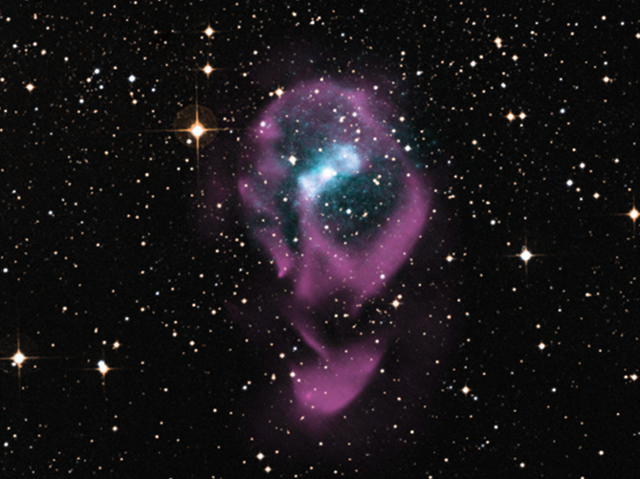The secret lives of neutron stars

Composite X-ray, visible-light, and radio image of the X-ray binary Circinus X-1. This object is a neutron star in mutual orbit with an ordinary star. Such systems could have been responsible for the reionization of the cosmos in the era of the first stars and galaxies. (credit: X-ray: NASA/CXC/Univ. of Wisconsin-Madison/S.Heinz et al; Optical: DSS; Radio: CSIRO/ATNF/ATCA)
Forget archaeologists and their lost civilizations, or paleontologists with their fossils-astrophysicist Heloise Stevance studies the past on an entirely different scale. When astronomers catch a glimpse of an unusual signal in the sky, perhaps the light from a star exploding, Stevance takes that signal and rewinds the clock on it by billions of years. Working at the University of Auckland in New Zealand, she traces the past lives of dead and dying stars, a process she calls stellar genealogy. There's a lot of drama in the lives of stars," she says.
On August 17, 2017, astrophysicists witnessed two dead stars' remnant cores, known as neutron stars, colliding into each other in a distant galaxy. Known as a neutron star merger, they detected this event via ripples in spacetime-known as gravitational waves-and light produced by the resulting explosion. This marked the first and only time scientists had seen such an event using gravitational waves. From those signals, they deduced that the neutron stars were 1.1 to 1.6 times the mass of the Sun. They also figured out that such collisions create some of the heavier natural elements found in the Universe, such as gold and platinum. But overall, the signals presented more puzzles than answers.